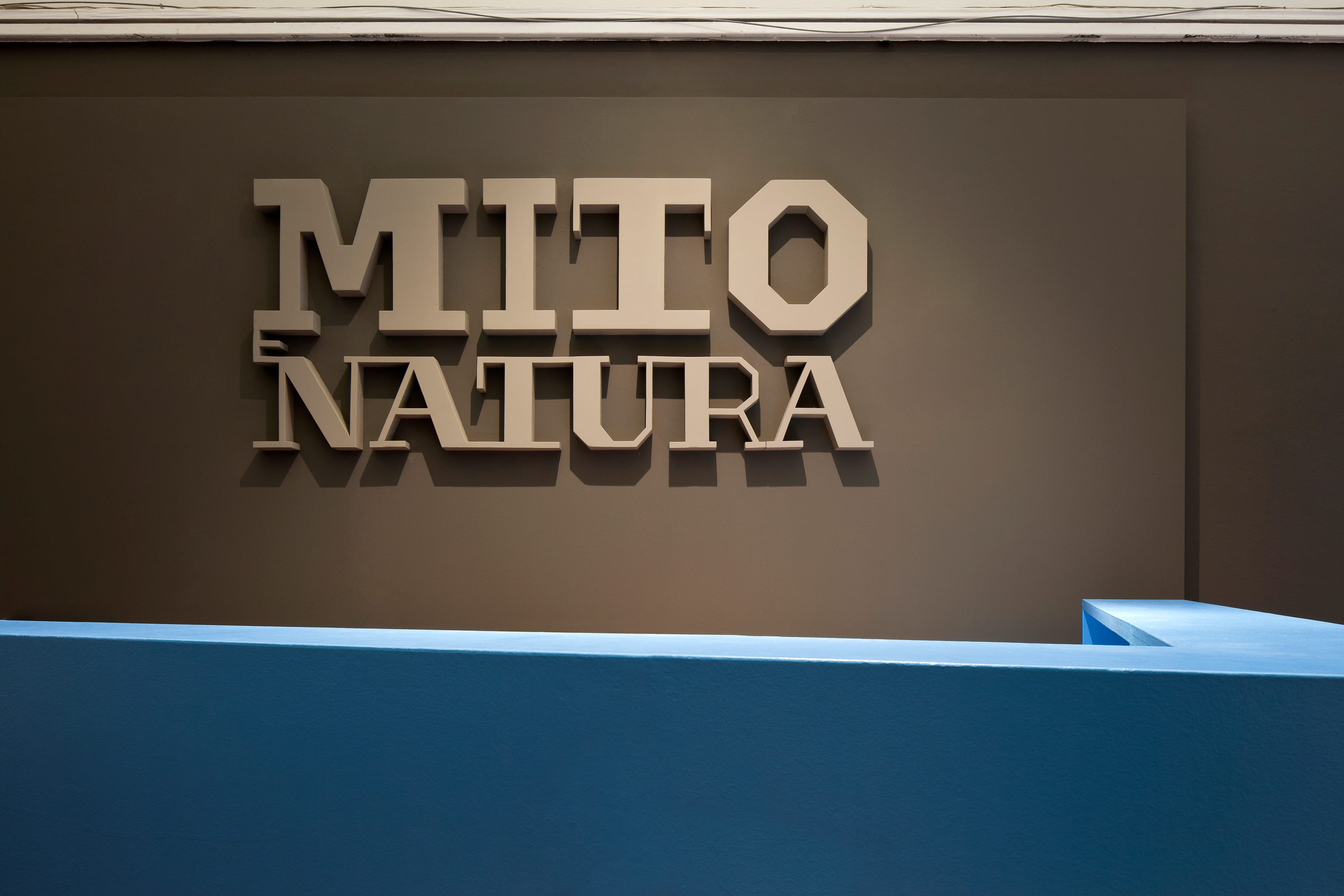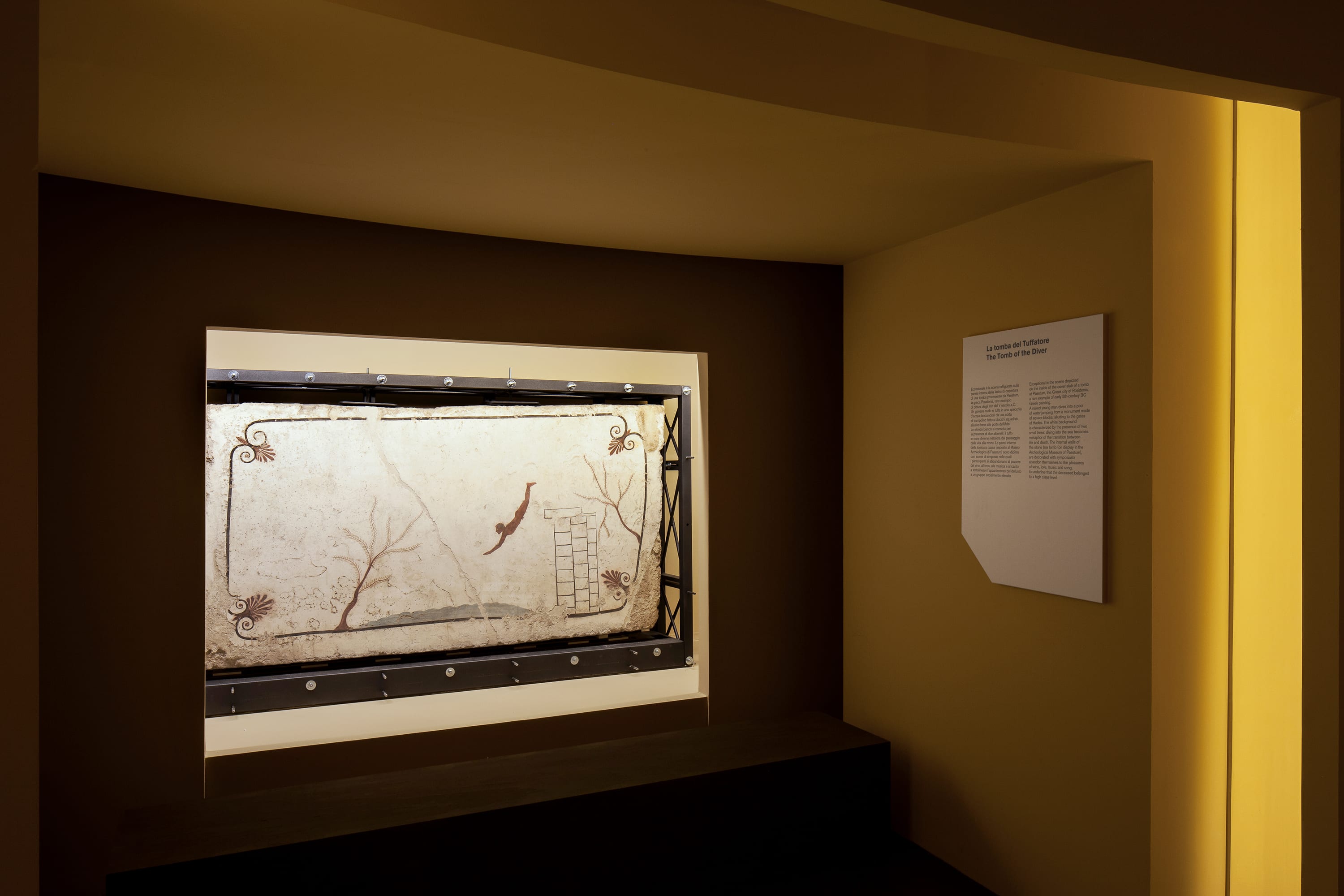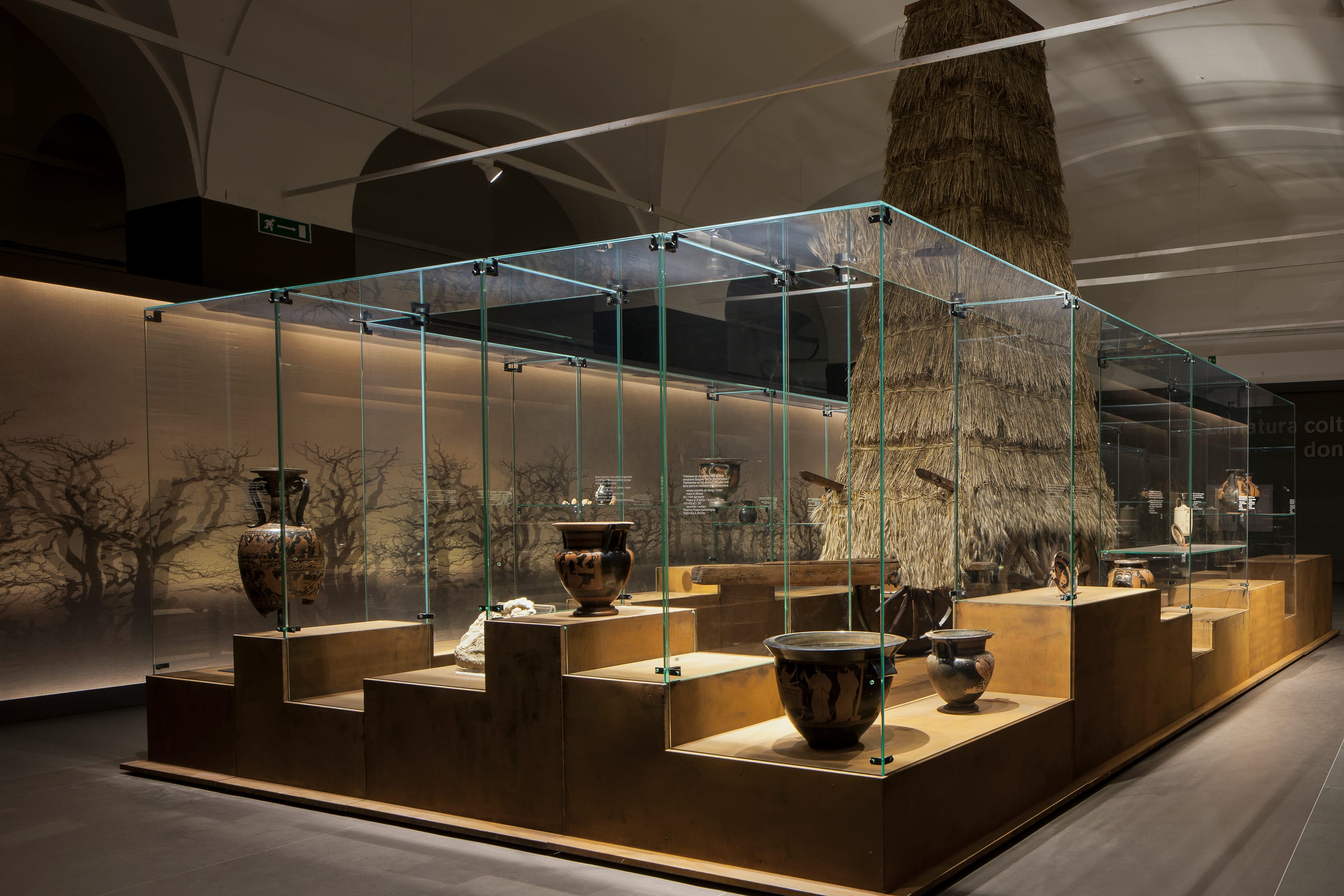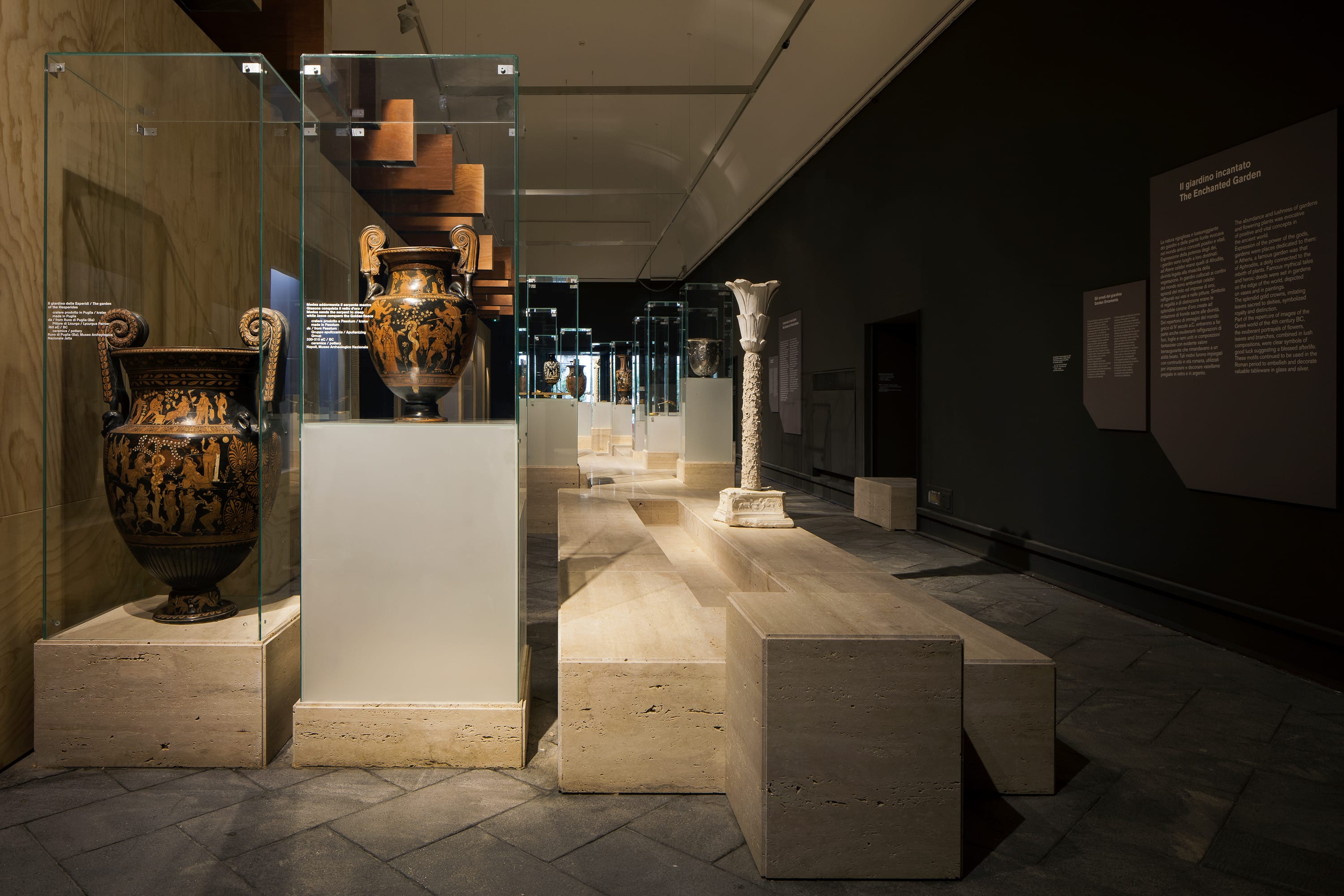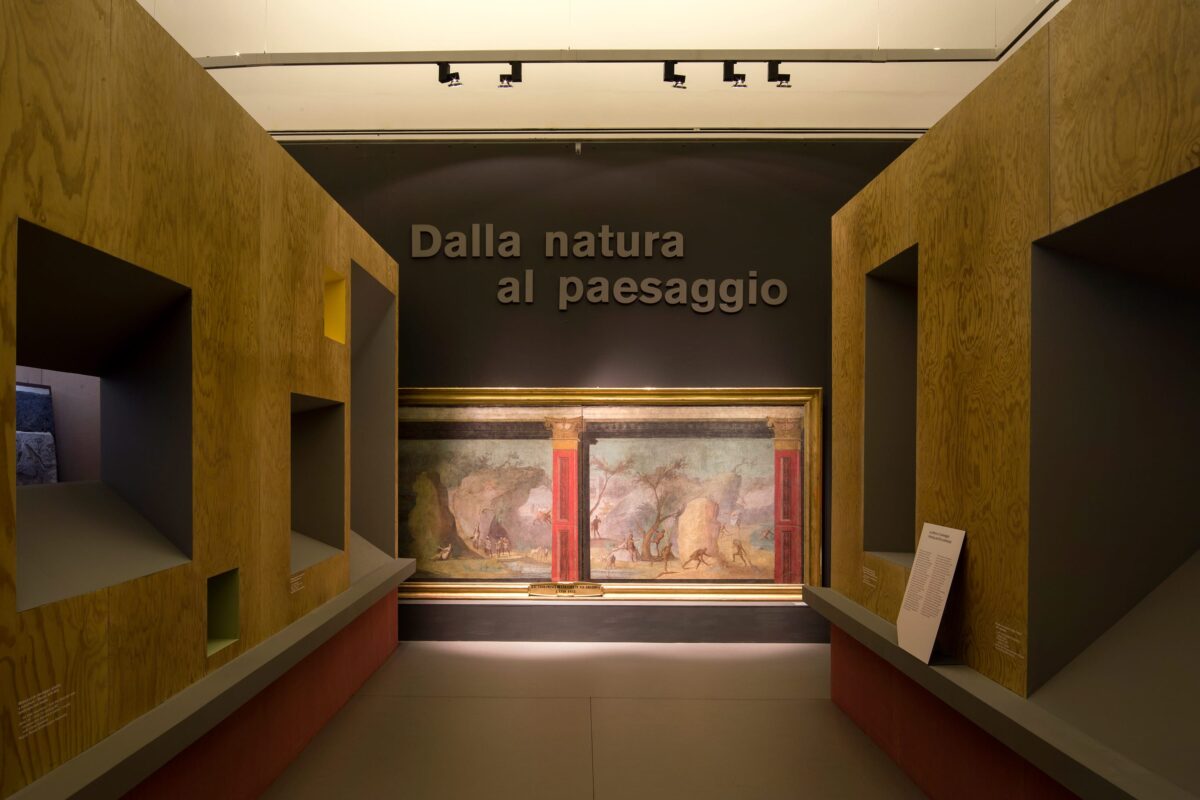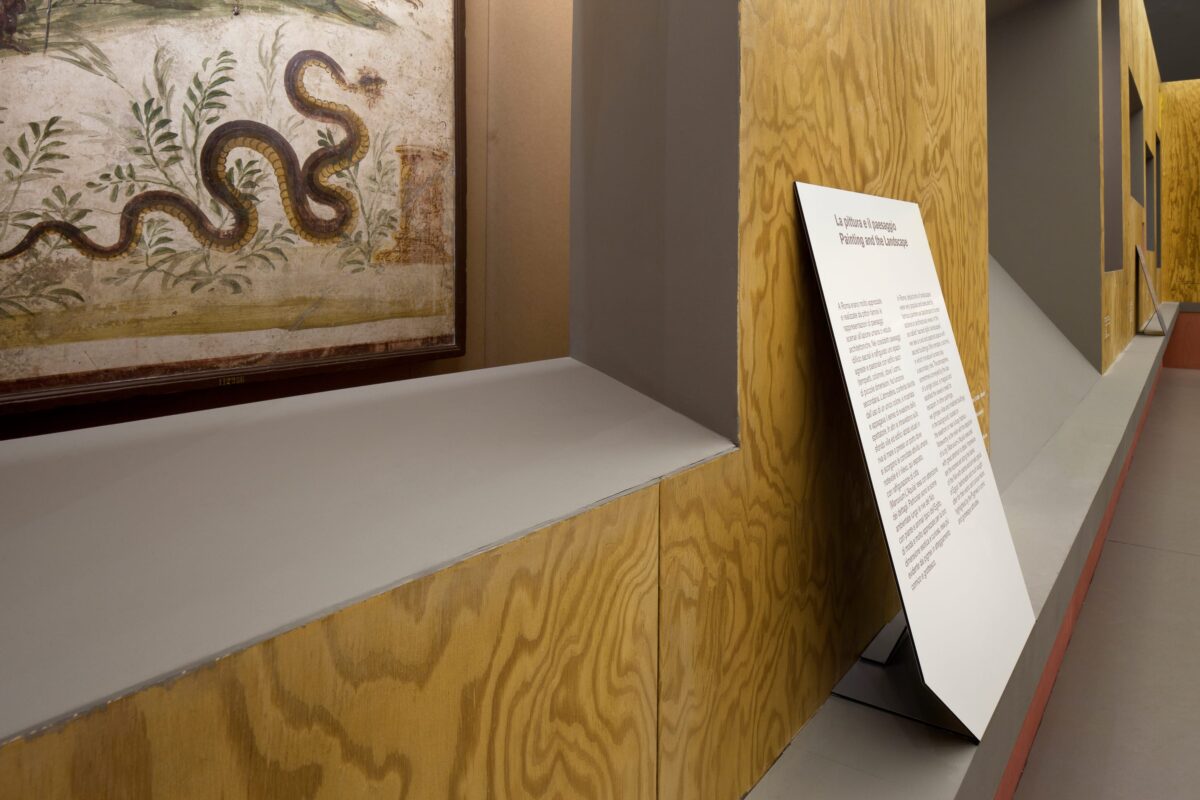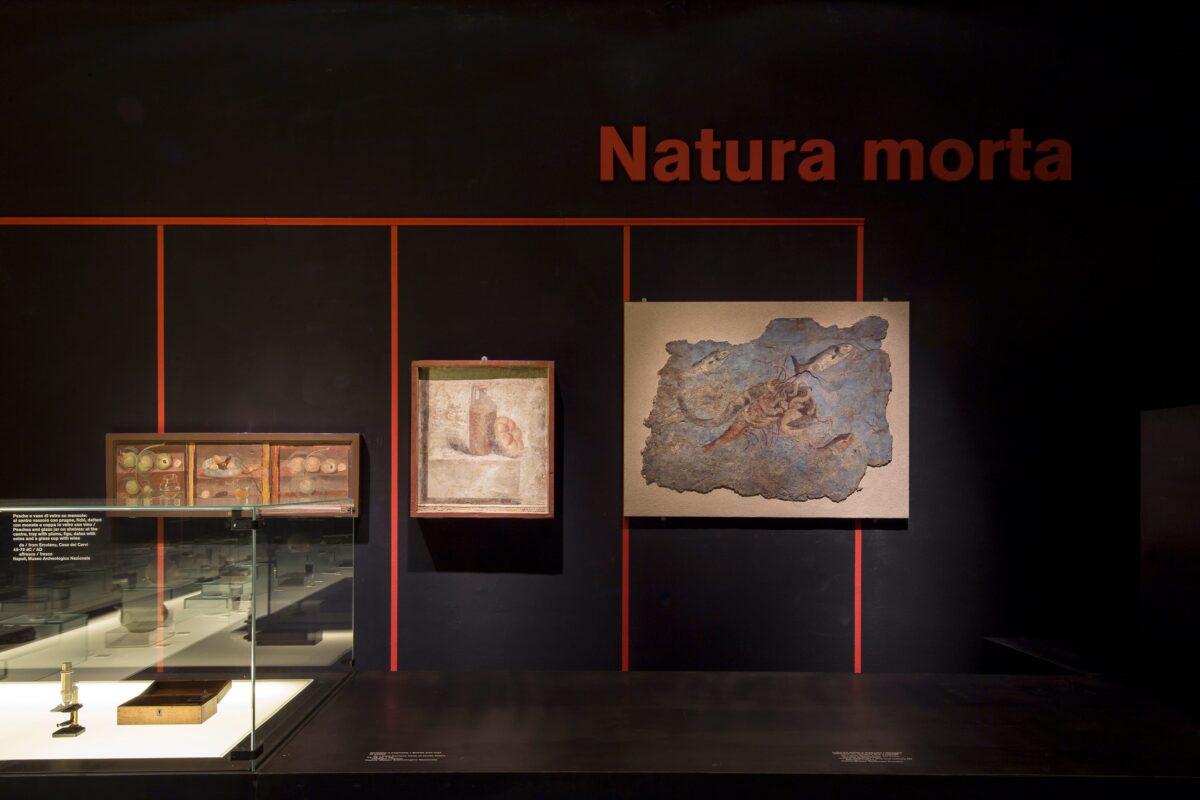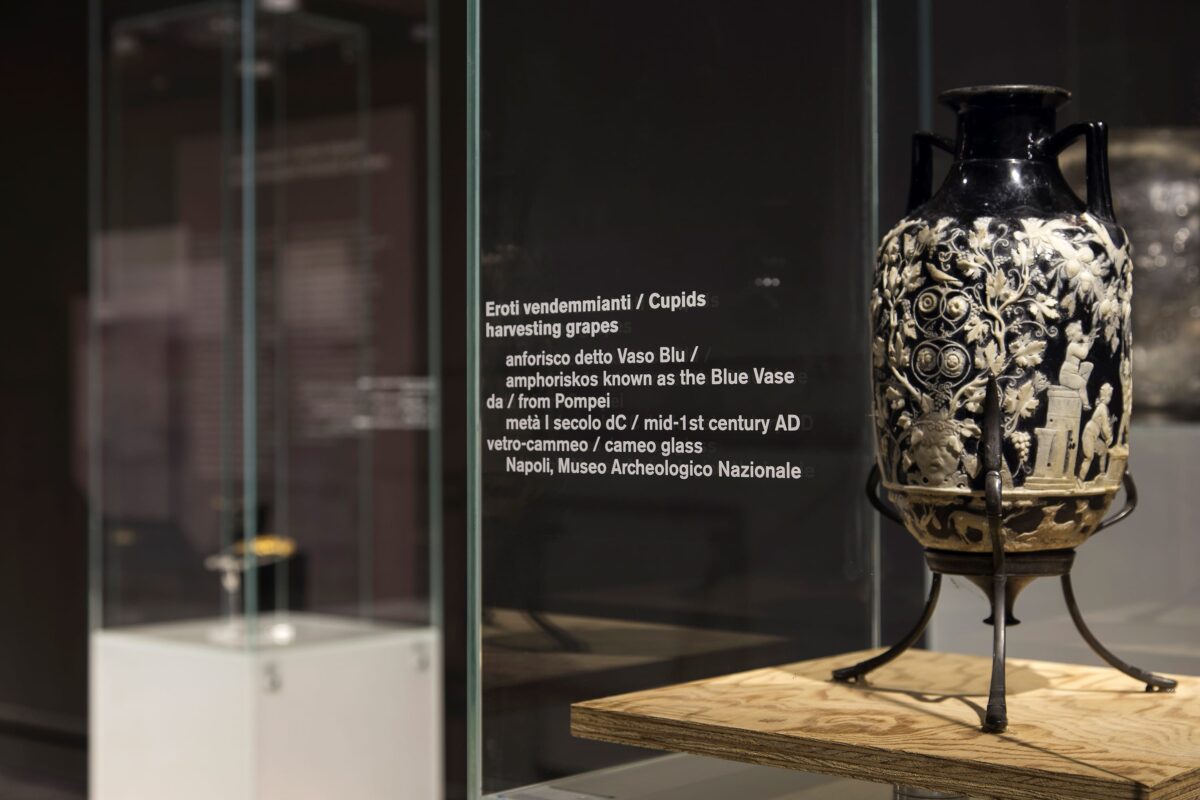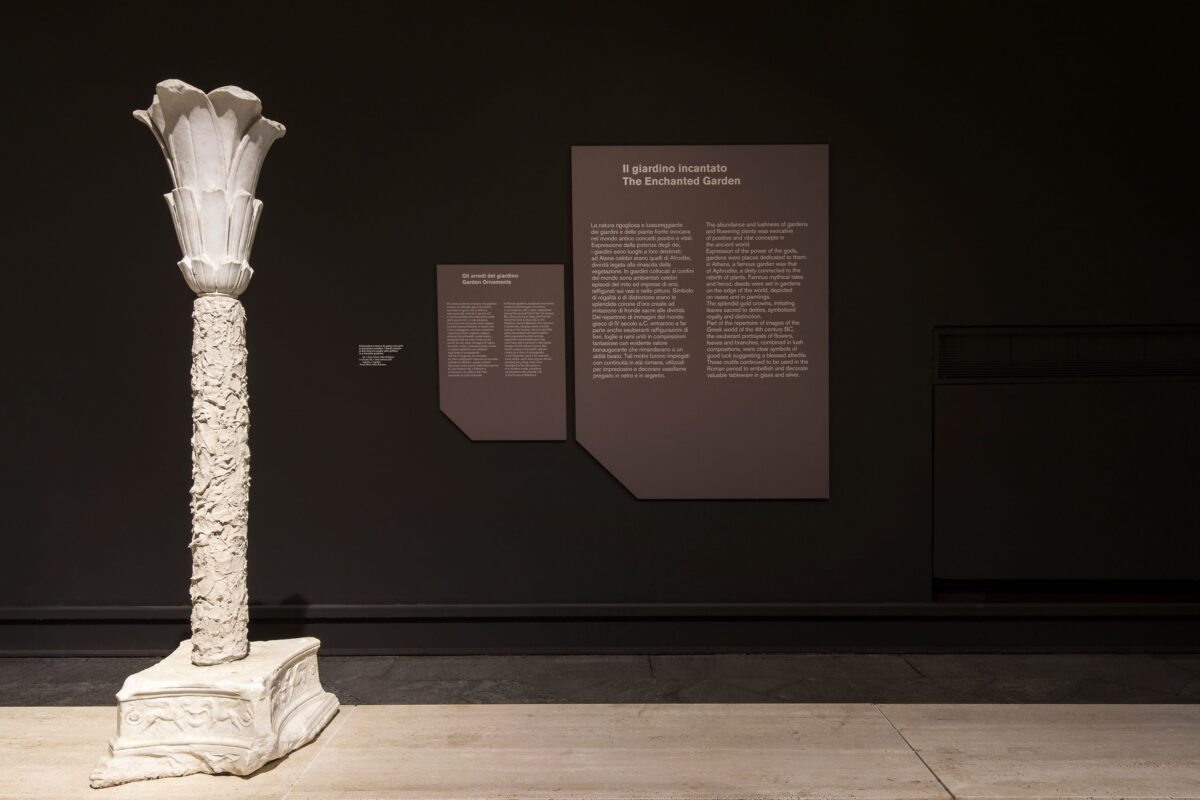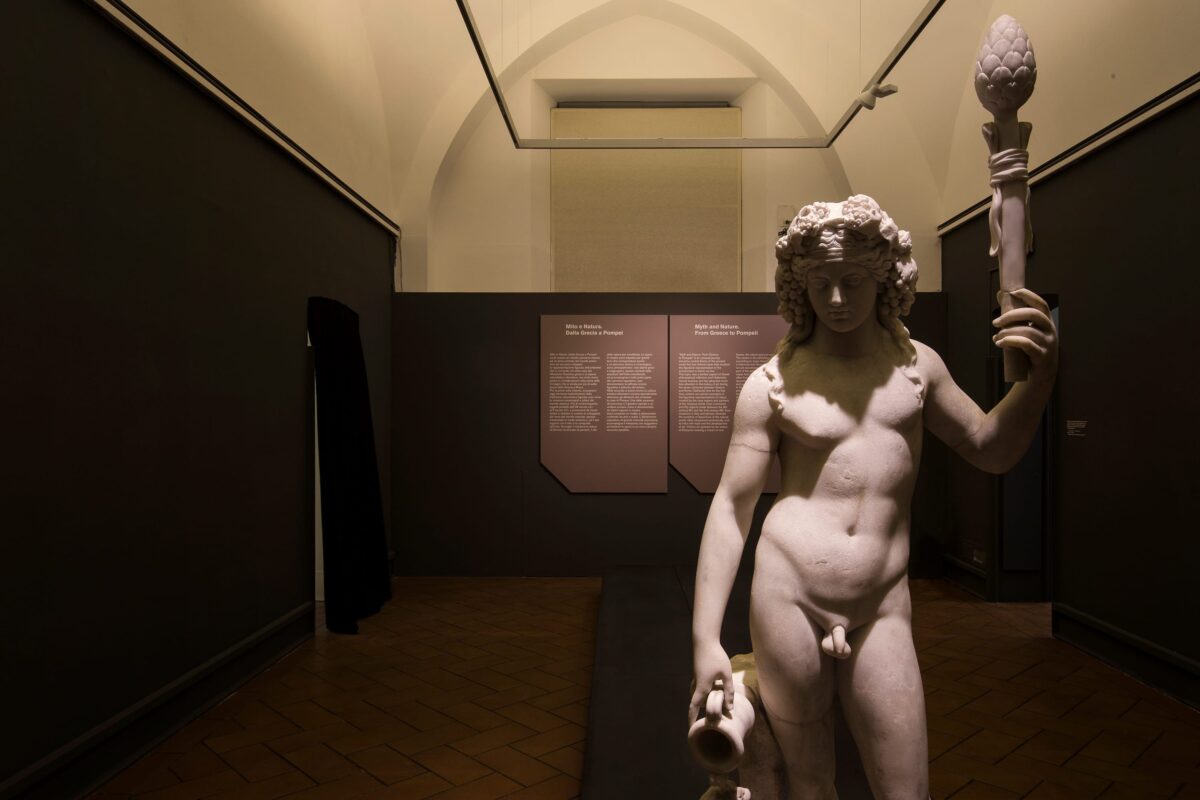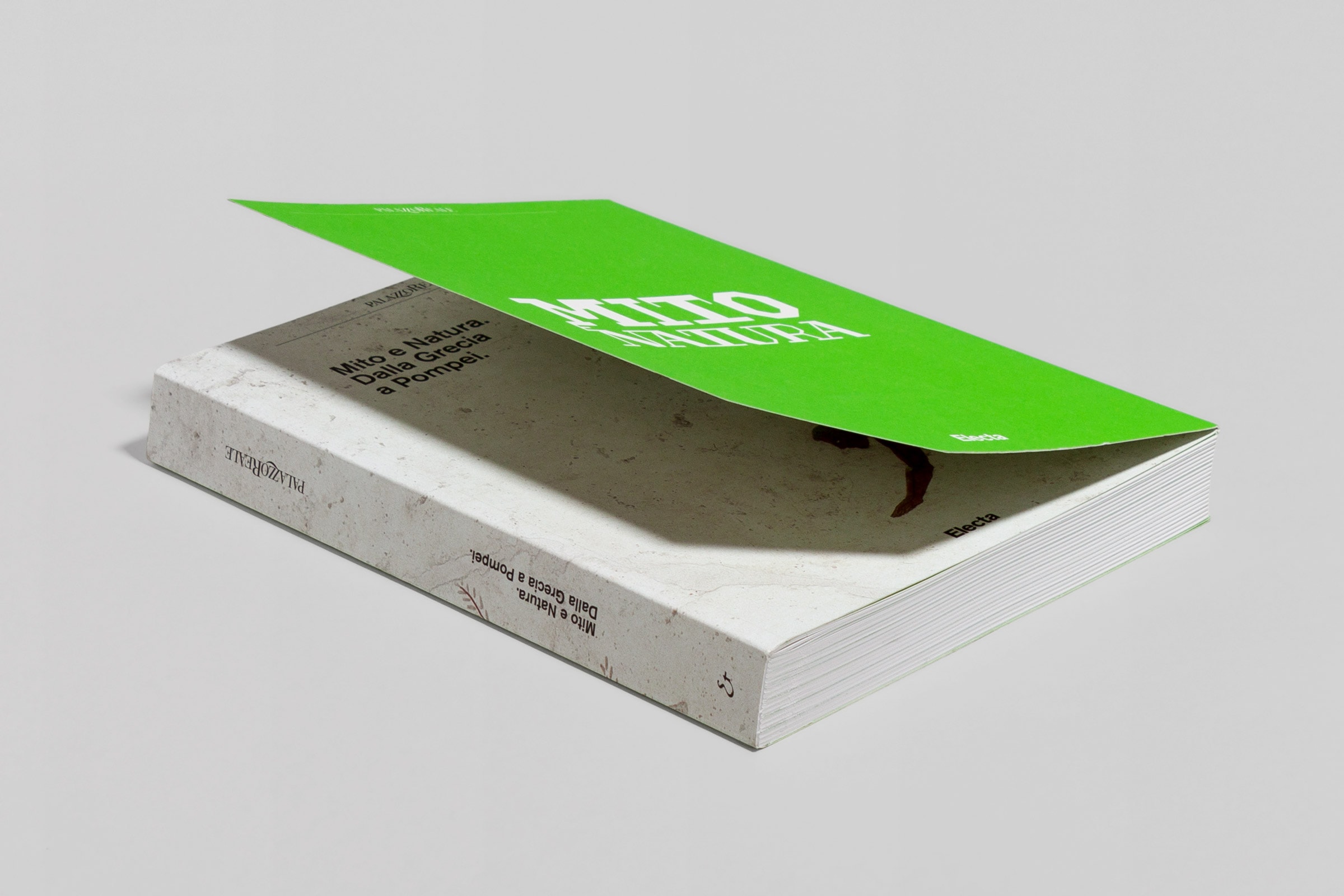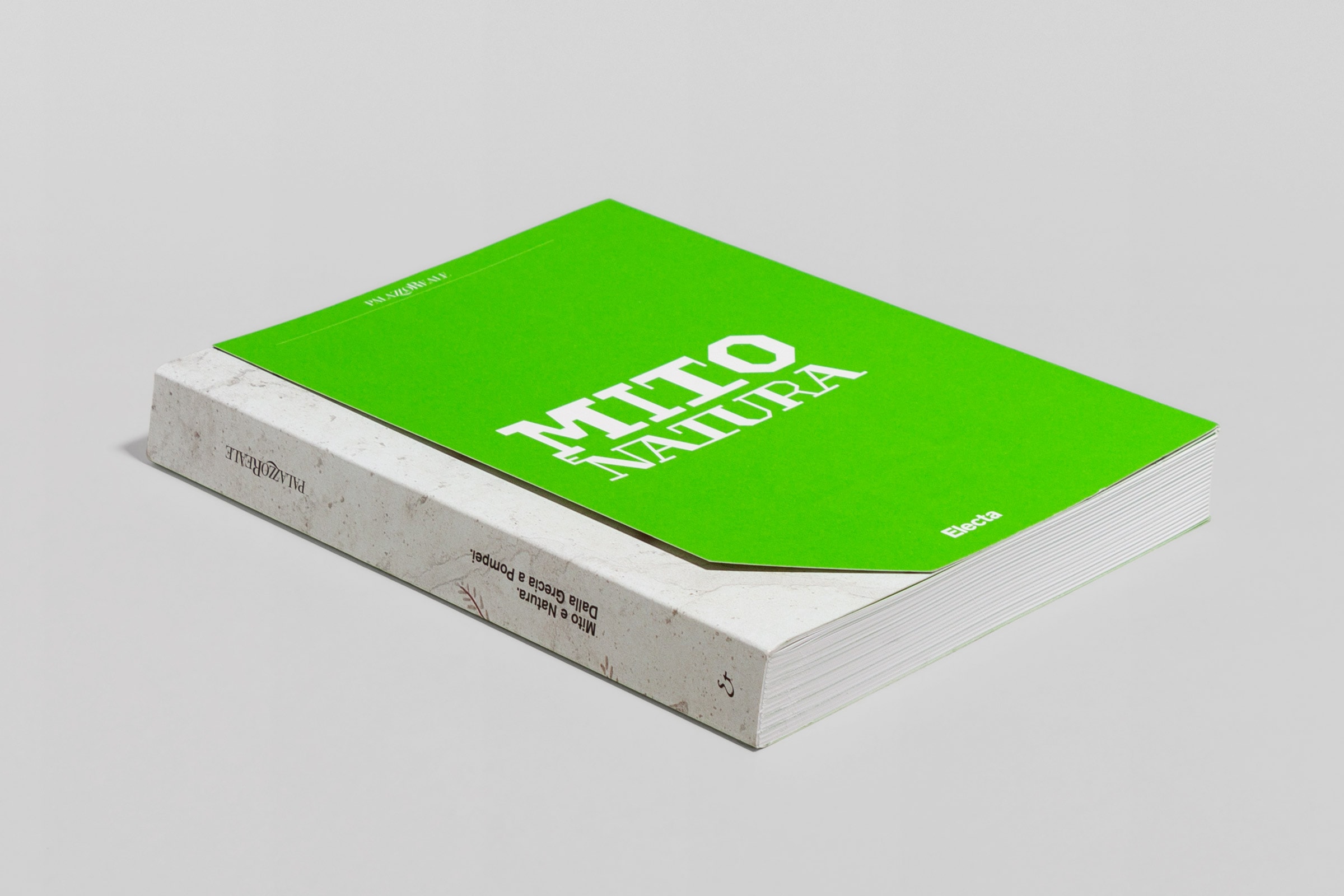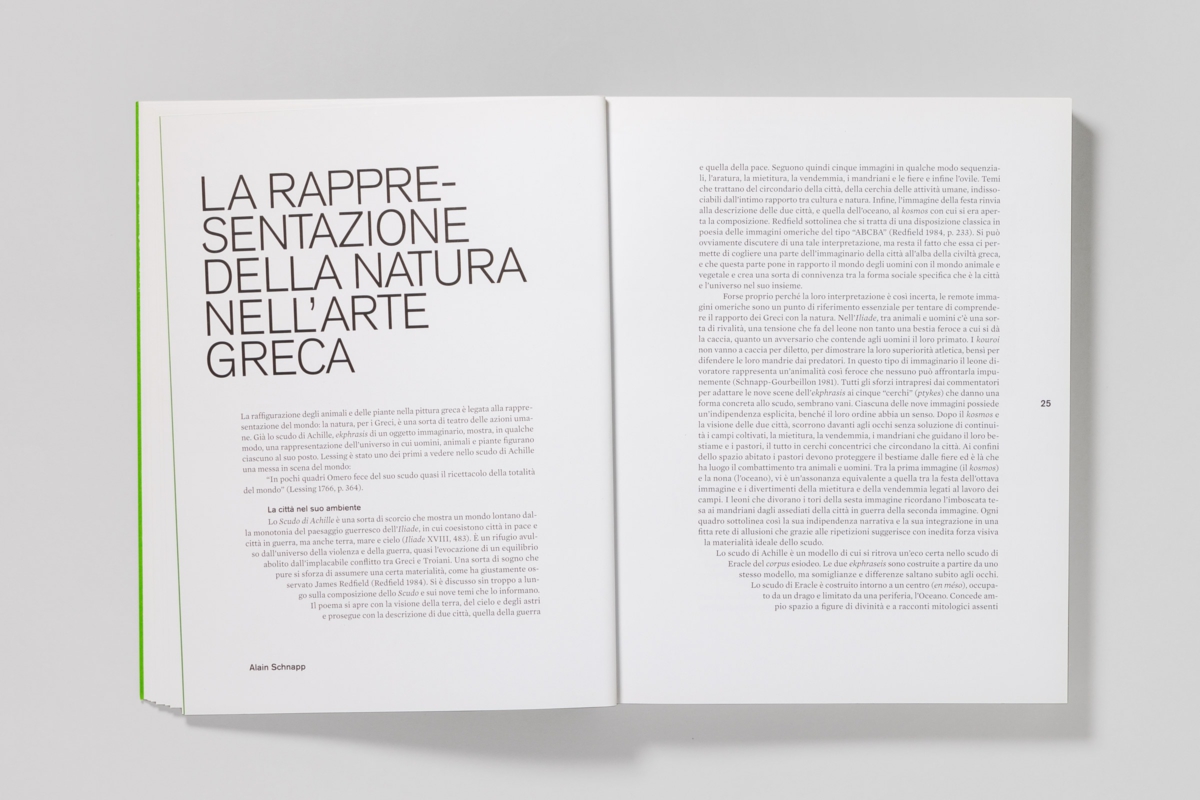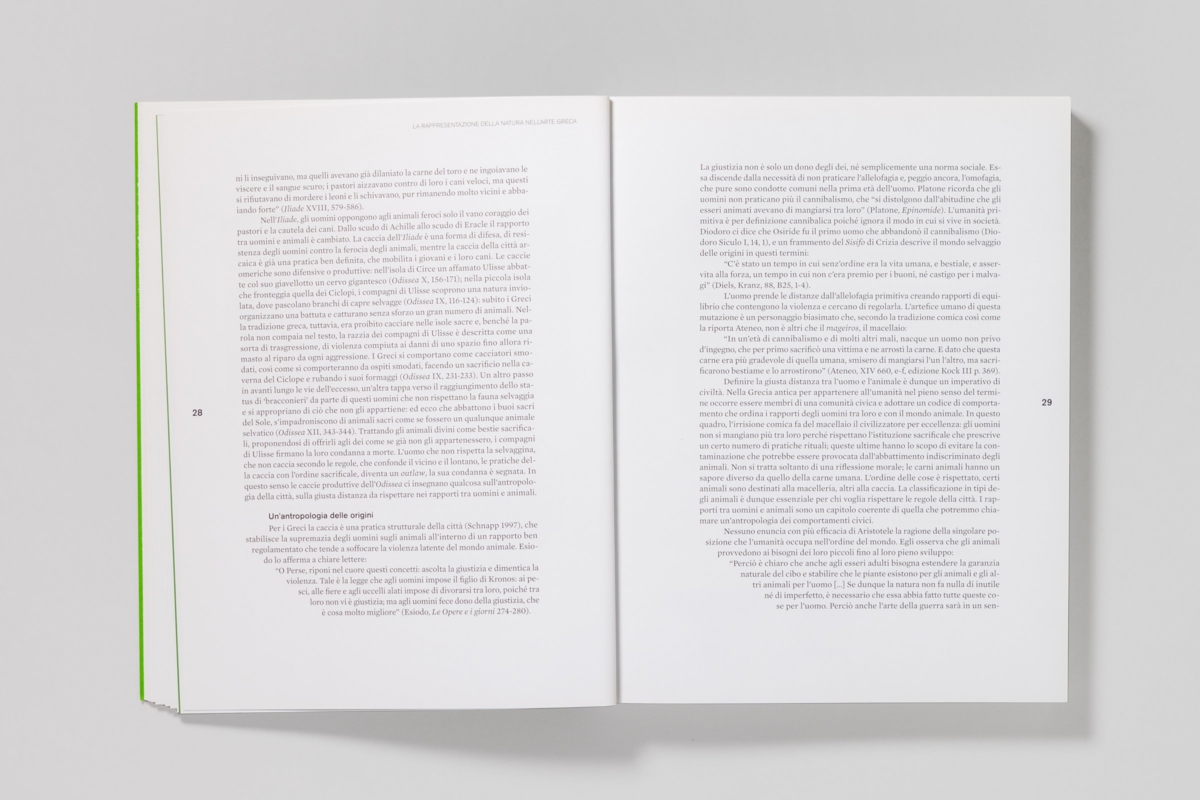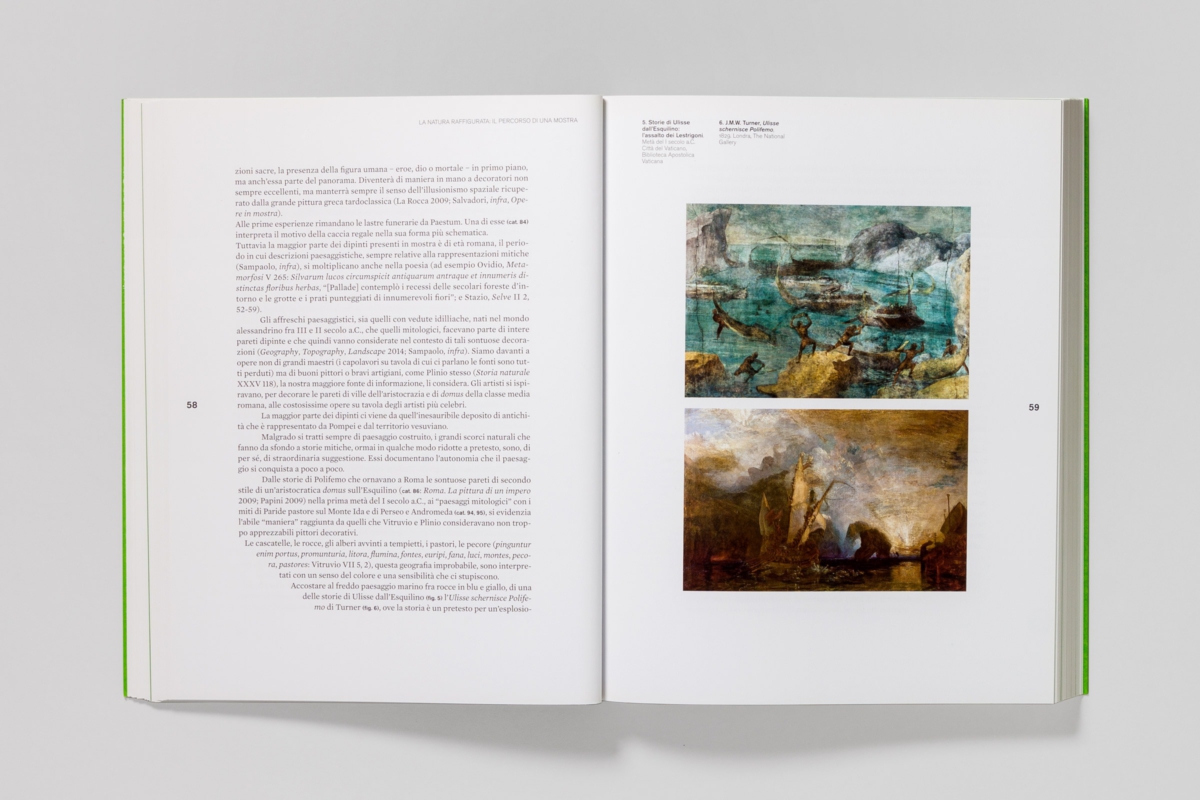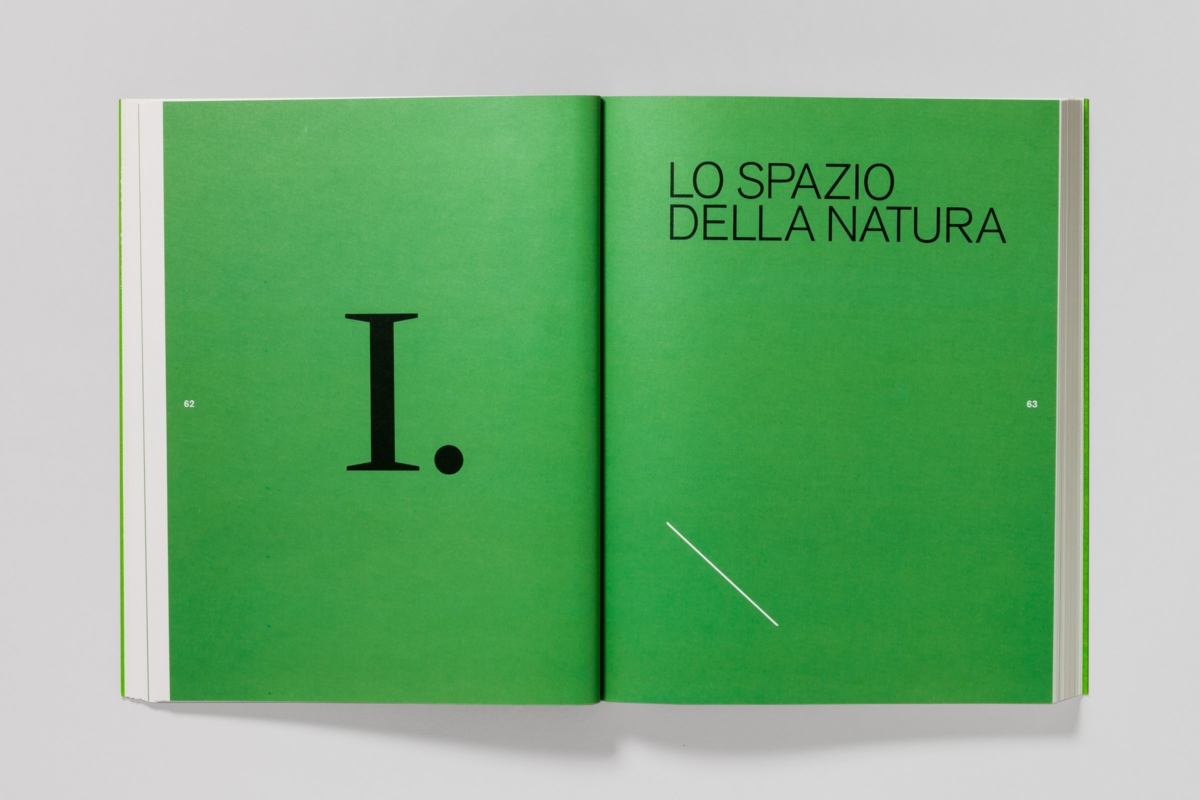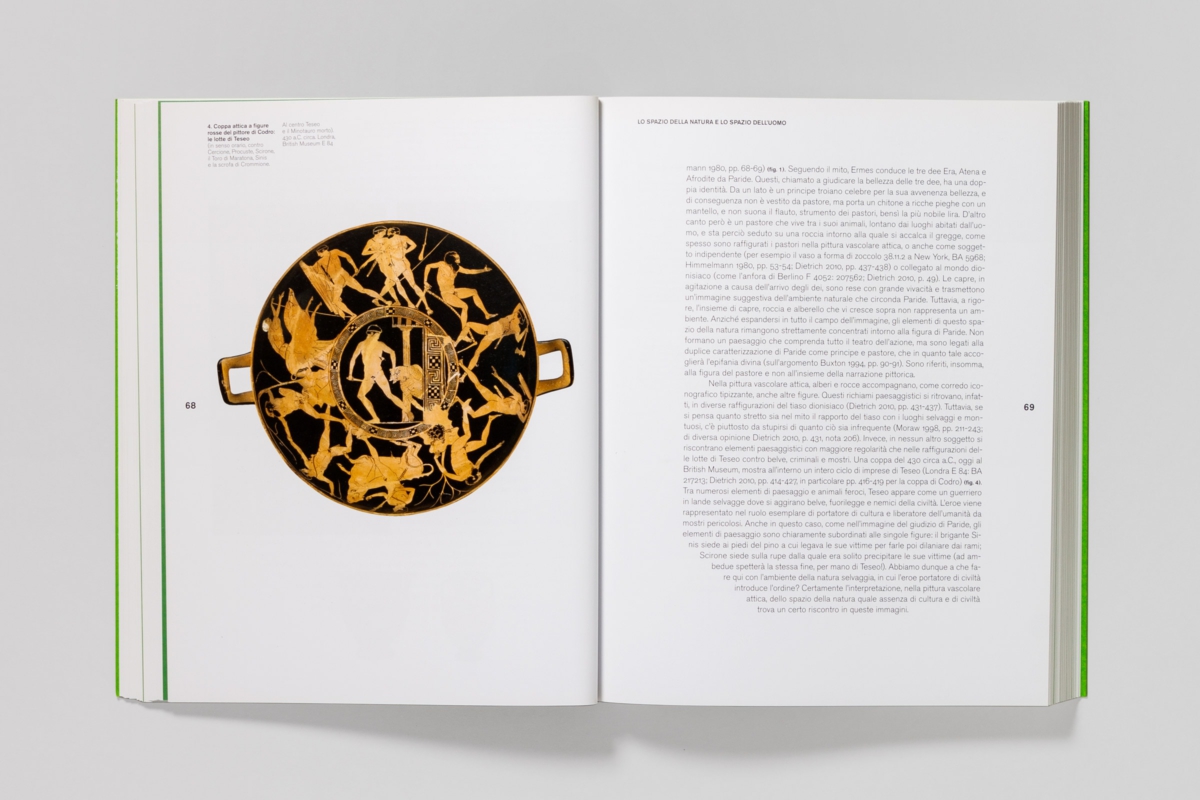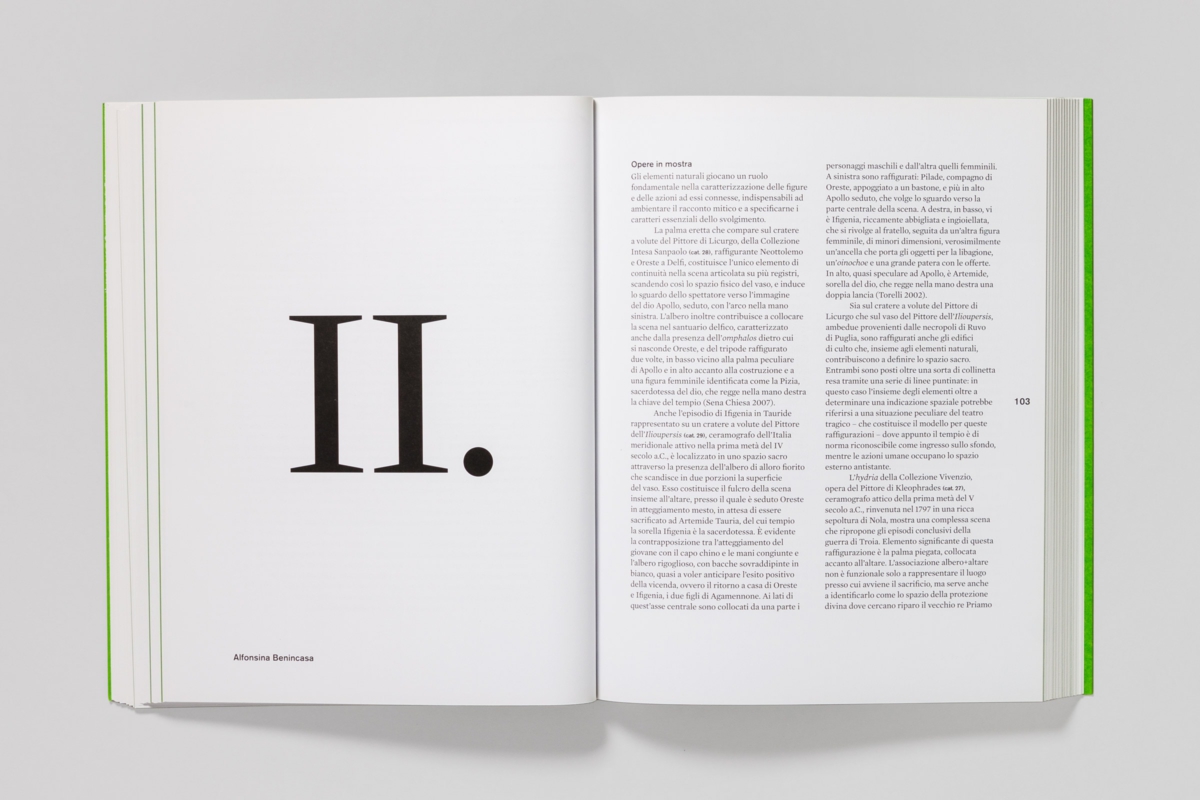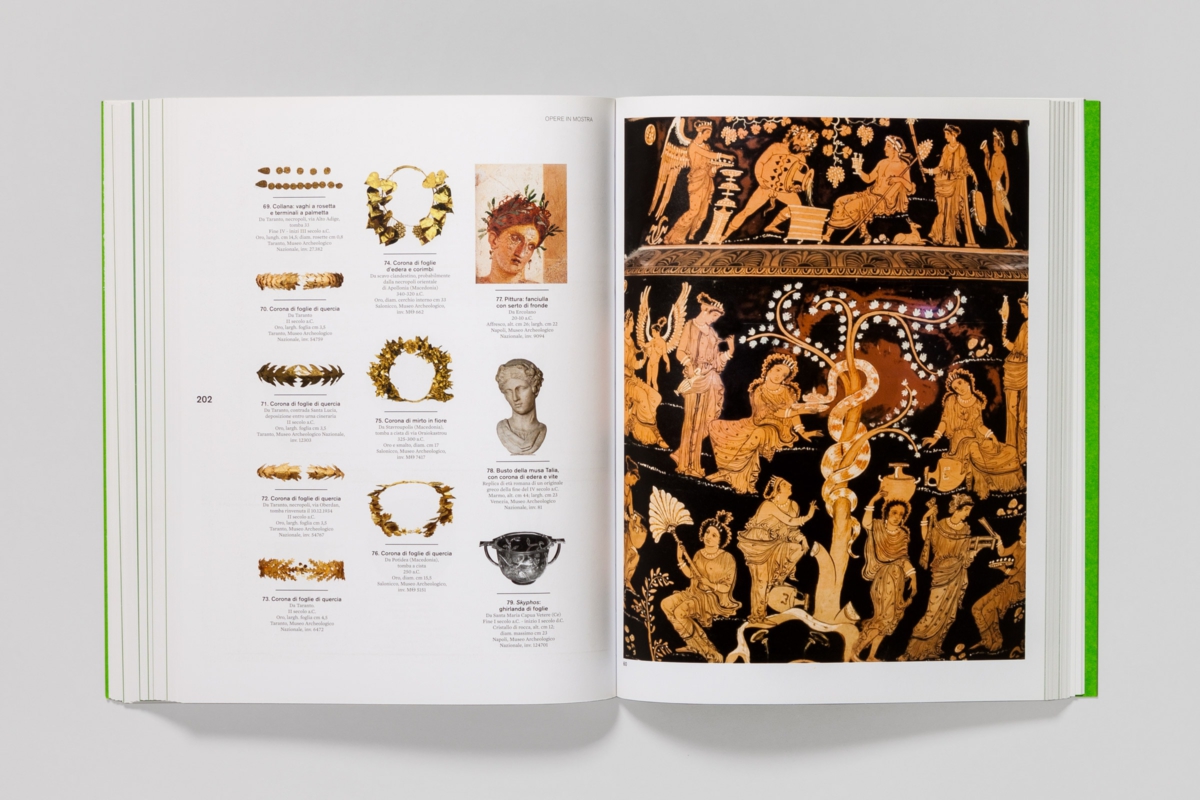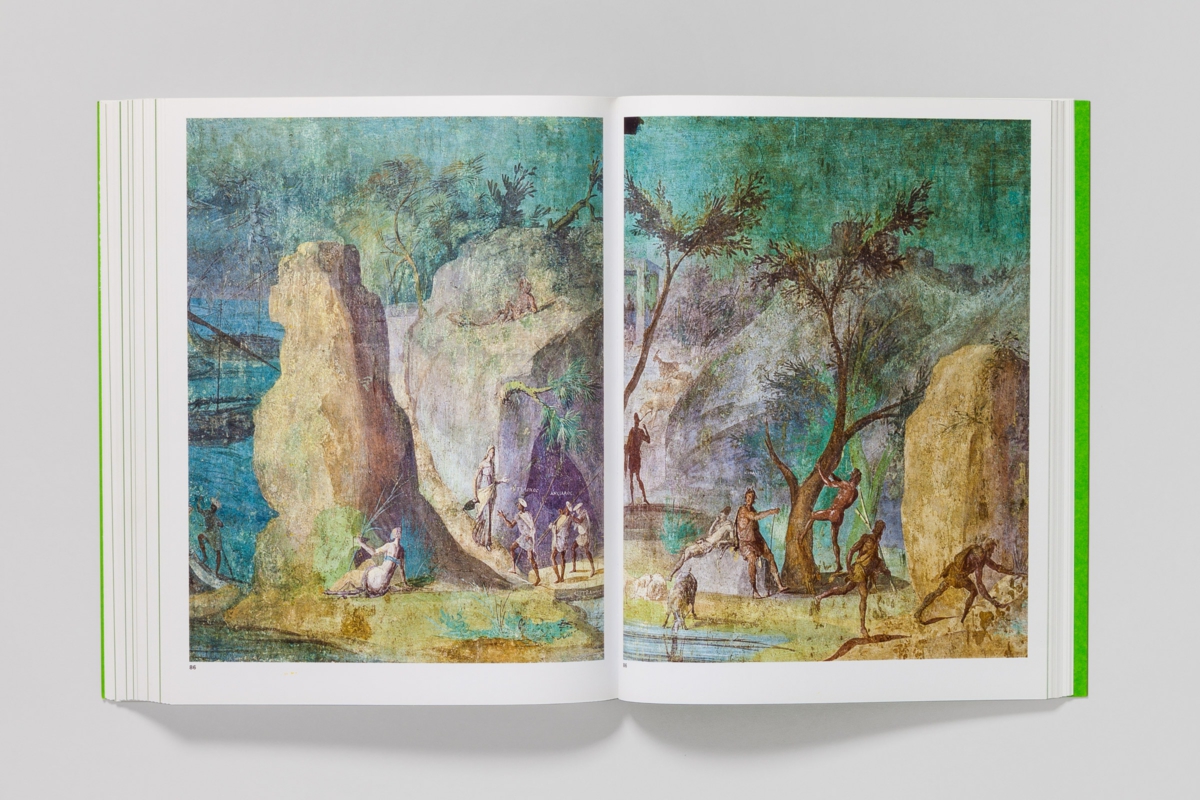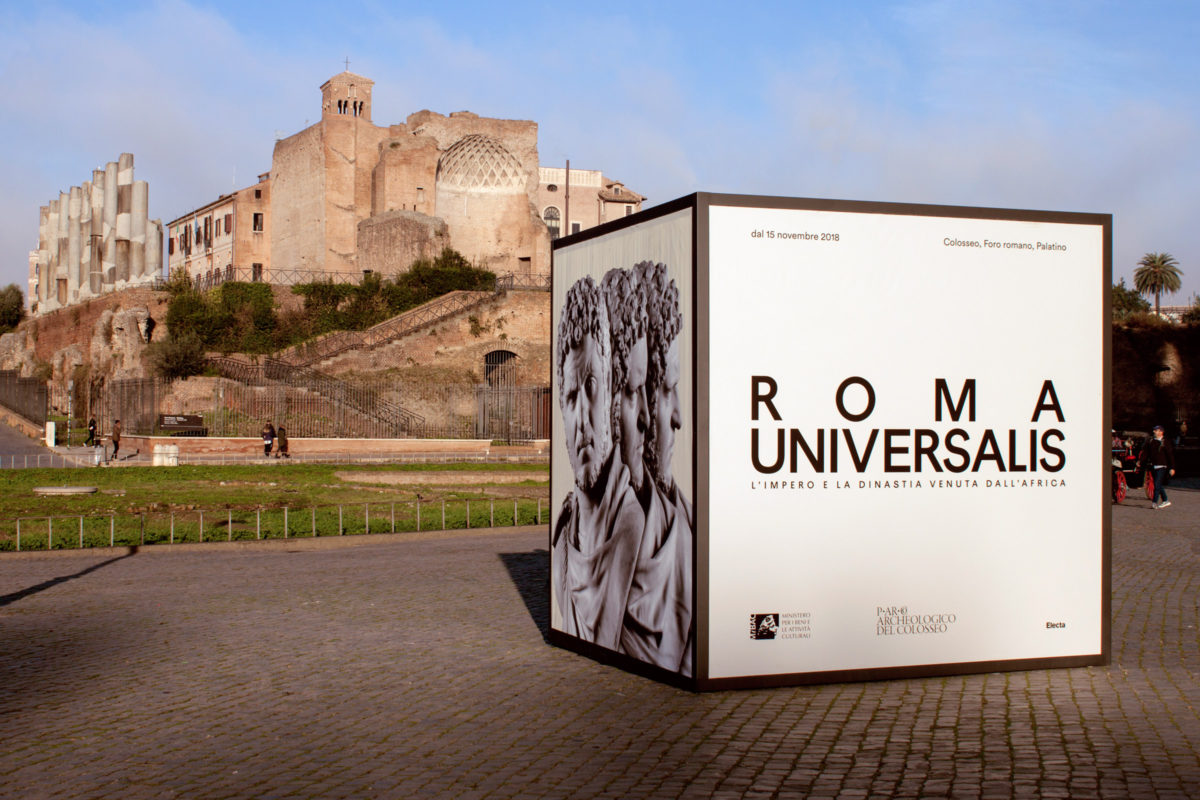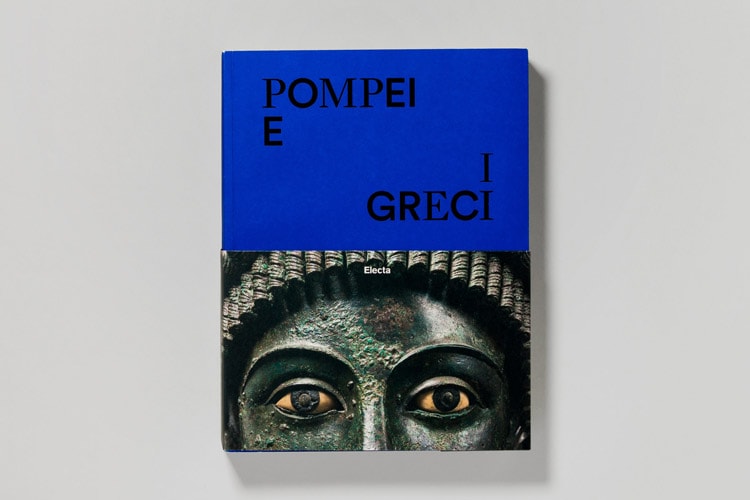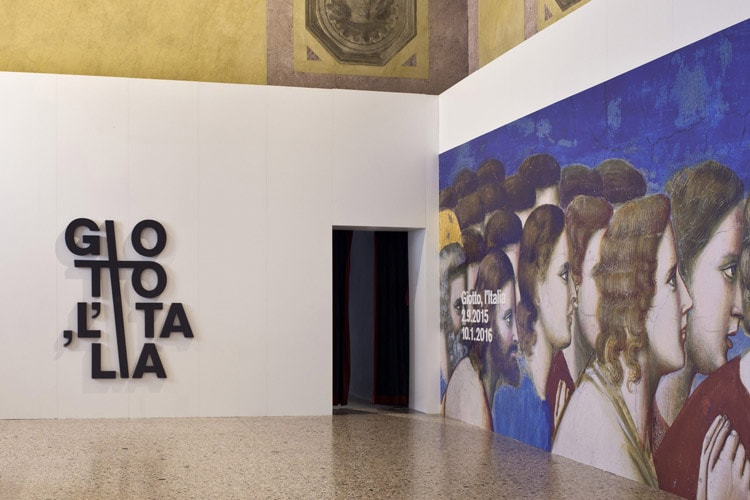Mito e natura
Without the hall, and close upon the gate,
A goodly orchard was situate
Of near ten acres, about which was led
A lofty quickset. In it flourished
High and broad fruit-trees that pomegranates bore;
Sweet figs, pears, olives, and a number more
Most useful plants did there produce their store;
Whose fruits the hardest winter could not kill,
Nor hottest summer wither. There was still
Fruit in his proper season all the year.
Sweet Zephyr breathed upon them blasts that were
Of varied tempers: these he made to bear
Ripe fruits, these blossoms; pear grew after pear,
Apple succeeded apple, grape the grape,
Fig after fig came: time made never rape
Of any dainty there.
Odyssey, Homer, translation by George Chapman, 1614-16
The Exhibition
The landscape, the garden, the nature cultivated by the gods, the sentiment of nature and the space of nature, the still life. These are the themes illustrated with archaeological relics with which the exhibition sheds light on the relationship of the Greeks and Romans with nature, in the set-up at Palazzo Reale in Milan and later at the National Archaeological Museum of Naples.
The Book
Mito e natura. Dalla Grecia a Pompei
Curated by Gemma Sena Chiesa, Angela Pontrandolfo
Publisher Electa
Size 19,5×25 cm
Pages 304
Binding Paperback with flaps
Year of publication 2015
ISBN 9788891804679
Ma di fianco alla reggia un orto grande,
Quanto ponno in dì quattro arar due tori,
Stendesi, e viva siepe il cinge tutto.
Alte vi crescon verdeggianti piante,
Il pero, e il melagrano, e di vermigli
Pomi carico il melo, e col soave
Fico nettareo la canuta oliva.
Nè il frutto qui, regni la state, o il verno,
Pere, o non esce fuor: quando sì dolce
D’ogni stagione un zeffiretto spira,
Che mentre spunta l’un, l’altro matura.
Odissea, VII, traduzione dal greco di Ippolito Pindemonte (1822)
La mostra
Il paesaggio, il giardino, la natura coltivata dagli dei, il sentimento della natura e lo spazio della natura, la natura morta. Questi i temi, illustrati da reperti archeologici, con i quali la mostra evidenzia il rapporto di Greci e Romani con l’elemento naturale, nell’allestimento di Palazzo Reale a Milano e successivamente al Museo Archeologico Nazionale di Napoli.
Il libro
Mito e natura. Dalla Grecia a Pompei
A cura di Gemma Sena Chiesa, Angela Pontrandolfo
Editore Electa
Formato 19,5×25 cm
Pagine 304
Confezione Brossura con alette
Anno di pubblicazione 2015
ISBN 9788891804679
